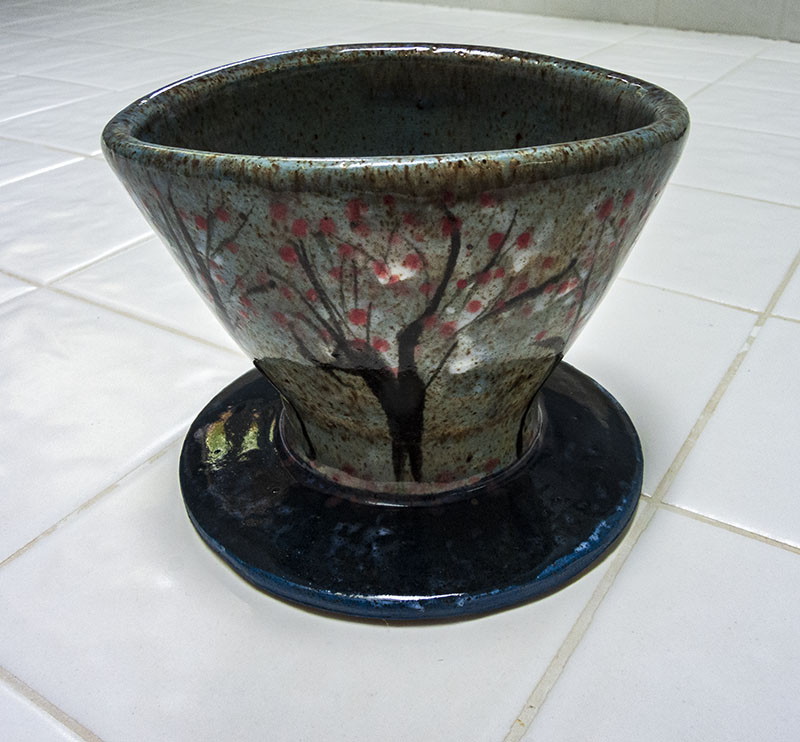
The person sitting at the wheel next to me at the Wednesday open studio sessions for a while inspired me to try my hand at making one of these coffee pourovers she was turning out at the rate of one per week. She was experimenting with functionality more than anything. I cashed in on her most successful design (there having been many flops apparently) and made this rather successful model.
So. A note about functionality. You can’t see the bottom, but there are two “feet,” one at the outer edge and one much closer to the center. This, presumably, is to prevent the liquid from leaking over the edge of the cup over which the pourover is placed. The squishy oval of the top is to accommodate the elongated cone-shaped paper filters.
More importantly, I had to learn how to use this device. The first cup of coffee I made was like dishwater. The water zoomed through the three holes at the bottom of the filter in about two seconds, barely saying hi to the ground coffee. I wondered if I had made the holes too many and too large. Enter Google search. Ah! The next time, I used TWO paper filters, poured over a small of boiling water that was just enough to wet the coffee and let it sit for 30 seconds (there is chemistry involved here), and then slowly poured the rest of the water so that it stayed connected with the coffee for long enough to make tasty coffee. Success! But even so, I think that next time, I think I will make either fewer or smaller holes in the bottom. I had no over-the-side leakage, so the feet did their jobs.
And a note about design. The week I made this pourover, I was inspired by the gorgeous dogwoods in bloom everywhere, in this case the pink ones. I used underglaze on “50” (lots of manganese) clay. The base color of the top is blue mixed with white. The base color of the bottom is blue mixed with black. There is some white for clouds (they were kind of swallowed on the bottom) and pink (red mixed with white) for the blossoms. Learning moment. The darker colors of underglaze overwhelm the lighter colors. I need to use less dark and more white for the mixes to get the tints I want.










